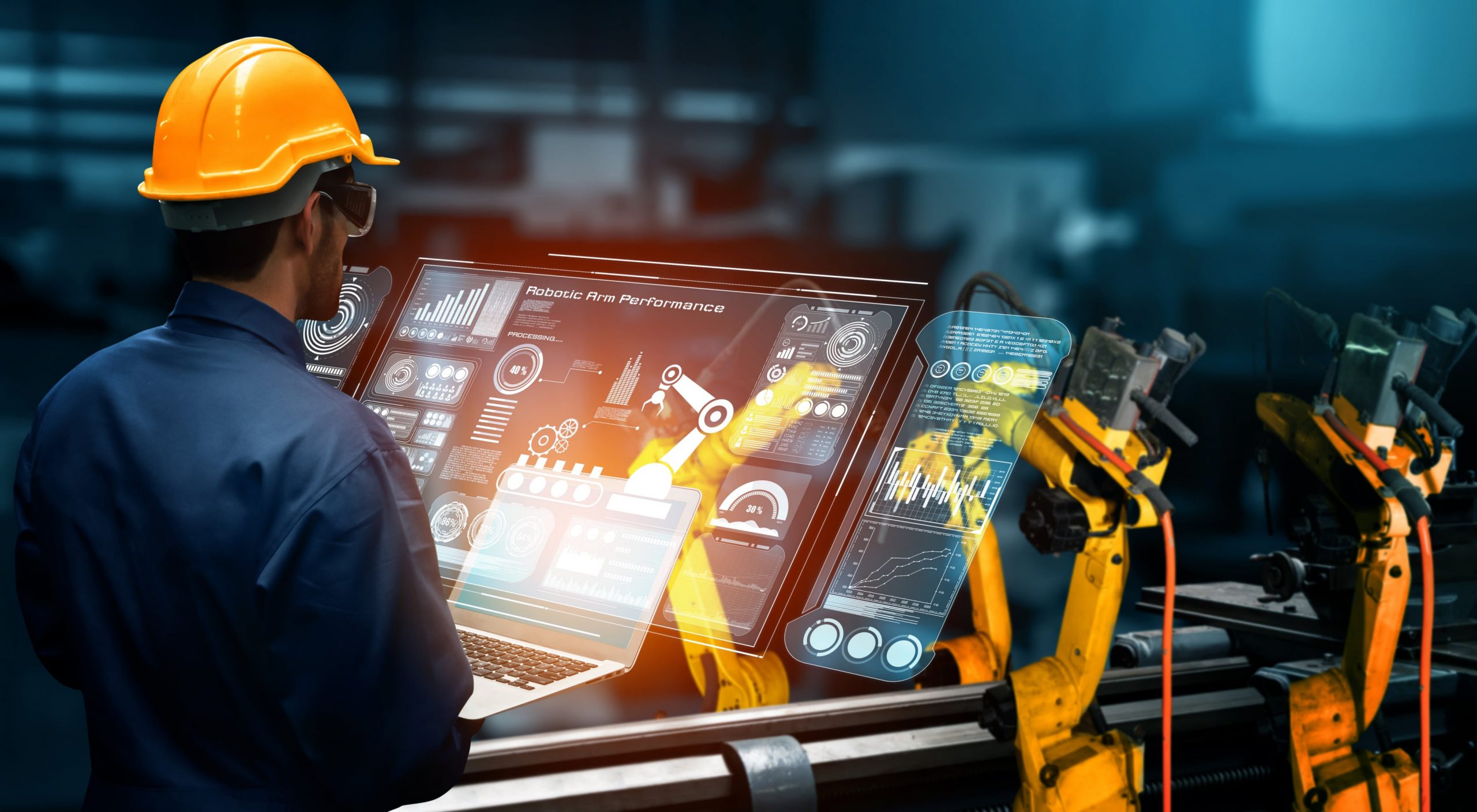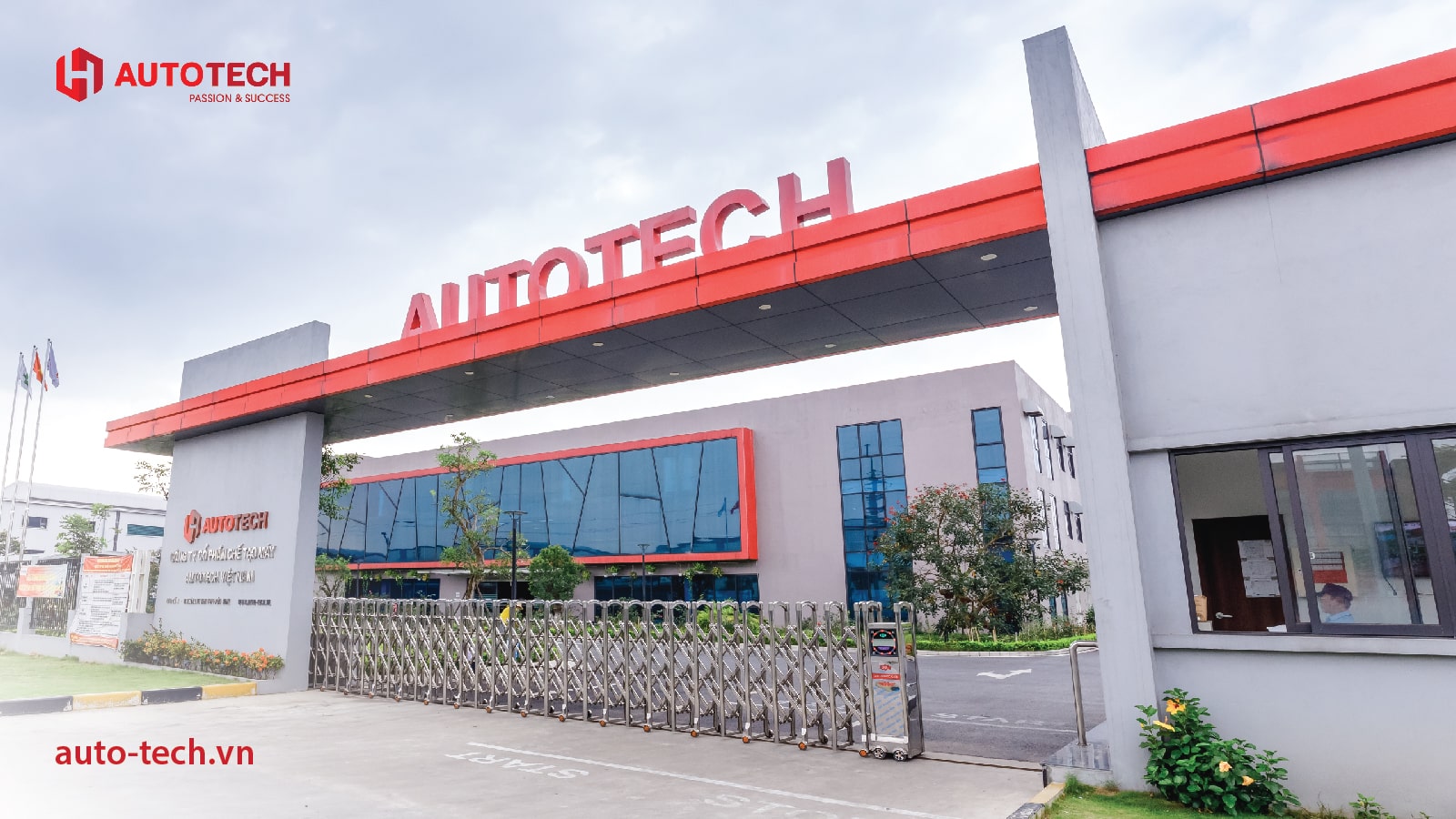Global manufacturing companies have been investing heavily in IIoT solutions to upgrade existing factories into smart factories. The application of IIoT in industrial manufacturing will help businesses increase productivity, optimize costs, reduce errors, improve safety, and effective predictive maintenance. Along with the current strong development speed of 4.0 technology, industrial IoT will be the development trend and popular application in the future. Join Autotech to find out 7 IIoT trends that will shake up manufacturing in 2022.

What is IIoT?
To learn what is IIoT? Firstly, you need to understand IoT – What is the Internet of Things?
Internet of Things (IoT) is a network of smart devices connected to each other via the internet to form systems for monitoring, collecting, exchanging and analyzing data.

Industrial Internet of Things (IIoT – Industrial IoT) is a more used and extended concept than IoT. IIoT is the collection of sensors, instruments and autonomous devices connected through the internet to industrial applications such as manufacturing, logistics, oil and gas, transportation, energy, mining and metals, aviation, etc.
In other words, IIoT is the application of IoT in the manufacturing industry to enhance industrial and manufacturing processes.
Each IIoT ecosystem includes: (1) devices with the ability to connect, communicate and store information; (2) public and/or private data communication infrastructure; (3) analysis and application of creating business information from raw data; (4) data storage generated by IIoT devices; and (5) people.
The role of Industrial IoT in manufacturing
The role of IIoT is to help people develop the intelligence of systems and devices by sharing data over signals; creating linkages between equipment inside a factory. In addition, the application of industrial IoT also helps connect factories with each other; allowing the plant to not only meet immediate goals; but also predict future challenges.
IIoT application in industrial manufacturing
Thanks to the application of IIoT technology in industrial production, production safety is more assured. Currently, there are many industries that have applied IIoT technology as follows:

- Agriculture industry: The agriculture industry also widely uses IIoT equipment. Smart sensors collect data on soil nutrients, humidity, etc., and allow farmers to grow crops productively.
- Oil and gas industry: With IIoT, oil and gas manufacturing becomes safer and more efficient. IIoT sensors can detect leaks using methods such as ultrasonic testing, as well as temperature and vibration fluctuations in equipment and ambient air. All of this monitoring adds up to early detection of potential problems, before they pose a risk to workers and the community.
- Automotive industry: The automotive industry extensively uses industrial robots, and IIoT devices can help proactively maintain these systems and spot potential problems before they can disrupt production. In addition to predictive maintenance during the production process, onboard IIoT sensors are improving maintenance practices once a vehicle rolls off the production line and is delivered to a customer.
- Aerospace: In an industry where sustainability and energy efficiency are ever-growing concerns, IIoT sensors are ideal for monitoring end-to-end energy usage in aerospace component manufacturing. This energy usage in production – considered a component of the overall efficiency of an aircraft component – can then be analyzed and optimized to reduce costs and meet regulations.
Benefits of IIoT
The 5 biggest benefits of applying IIoT in industrial production:

1. Increase efficiency productivity
The biggest benefit of IIoT is that it gives manufacturers the ability to automate, and therefore optimize their operating efficiency. Robotics and automated machinery can work more efficiently and accurately, boosting productivity and helping manufacturers streamline their functions. Additionally, physical machinery can be connected to software via smart sensors that monitor performance on a constant basis. This enables manufacturers to have better insights into the operational performance of individual pieces of equipment as well as entire fleets.
2. Reduce errors
IIoT empowers manufacturers to digitize nearly every part of their business. By reducing manual process and entries, manufacturers are able to reduce the biggest risk associated with manual labor – human error.This goes beyond just operational and manufacturing errors. IIoT solutions also can reduce the risk of cyber and data breaches caused by human error.
3. Predictive maintenance
Predictive maintenance is achieved by connecting to IIoT-based smart sensors to analyze equipment condition statistics. The goal is to anticipate equipment failure by constantly monitoring your machines during normal operation and alerting system operators when there are indications that the equipment requires replacement or attention. With predictive maintenance, system operators can take measurements on different dimensions of equipment performance and conditions, collect the data, analyze it, and use the information to better manage the overall application.
4. Improve safety
IIoT helps ensure a safer workplace. Fully functioning IIoT solutions have integrated safety systems that use data from monitoring and control devices to help in improving workplace safety. In case, any incident occurs, valuable data is obtained from these systems, which can help in preventing their repeated occurrence in the future. Wearables are also used in industrial IoT operations that keep a tab on things such as the surrounding noise levels and employee posture, etc. and can instantly alert the employees when they do not follow proper safety procedures.
5. Reduce costs
The application of IIoT in the factory helps to manage equipment and machinery effectively. Machine maintenance costs can be positively improved by connecting smart sensors thereby timely detecting problems arising during operation, helping to save major repair costs. In addition, the application of IoT technology also helps to reduce labor costs, when process efficiency is improved.
Challenges of Industrial IoT
Although IIoT is transforming the future of industries, businesses have a hard time realizing this technology. Here are the common challenges that businesses face during the implementation phase:
1. Cybersecurity: Security is one of the biggest challenges for IIoT applications. Industrial IoT devices also create more security vulnerabilities for businesses. When attacked, in addition to the loss of important data, the devices can be mishandled, suspended production, affecting the reputation and finances of the business..

2. Investment cost: The cost of industrial IoT solutions is quite high. Although one of the main benefits of IIoT is improving production efficiency and reducing costs, businesses are unsure of the investment efficiency that the solution actually achieves.
3. Connectivity: One of the main requirements for applying IIoT is to collect reliable data from devices. However, there are many reasons why it is impossible to collect data from devices such as old-fashion ones and those that do not support data collection or follow different specialized protocols.
4. Employee skills: For many businesses, training or finding new staff capable of designing, deploying, and operating modern IIoT solutions is a huge challenge.
7 IIoT of trends in manufacturing 2022
1. Trend #1: Smart Factory
In industry 4.0, smart factories are one of the leading trends of IIoT, and are also being most interested in manufacturing enterprises today. Built on the foundation of IIoT technology, the smart factory makes every process in the factory fully digitized, fast and efficient. However, the smart factory will really achieve maximum performance and expected profits if there is a solid logistics system that ensures all of the factory’s storage requirements are met. Therefore, the smart warehouse system is an effective assistant, accompanying the development of the smart factory. By 2022, these two outstanding technological achievements will become a new standard for the future manufacturing industry.

2. Trend #2: Connectivity Technologies
Wireless connectivity is key to ensuring that IIoT applications can function to their full potential. Improving wireless access is likely to be a popular trend in 2022 as wireless networking technology becomes more sophisticated and the demand for wireless technology increases. There are several technologies in use and on the rise today in 2022 for manufacturing IIoT systems such as: Bluetooth, Zigbee, Wifi,… In particular, high speed Wi-Fi connections are one of the best solutions for industrial Internet of Things applications for factories in 2022.

3. Trend #3: Digital Twins
With this technology, IIoT devices can be monitored online, with the end goal of optimizing performance, predicting faults, and decreasing downtime. By 2022, digital twins (virtual replicas) will be used as an important IIoT trend for monitoring and managing remote equipment and assets. Manufacturers can also use digital twins to bring together data from real-time across multiple devices and smart sensors to create a composite view of the system for effective decision-making.
4. Trend #4: Remote monitoring and control
Thanks to IIoT networks, quality assurance monitoring can be done remotely and automatically. This can improve productivity and efficiency of manufacturing businesses greatly. Real-time alerts can be sent to allow for more rapid response to issues like unexpected machine failures and other disruptions. Real-time video connectivity through industrial internet of things devices also supports artificial intelligence efforts like automated visual inspection. This allows for AI to detect defectives and remove them from the assembly line before they can be shipped off. AI-driven visual inspection solutions would not be possible without IoT sensors and cameras to give eyes and ears to the decision-making process.
5. Trend #5: Edge Computing
One of the most interesting trends in the sphere of IIoT technology is edge computing. In manufacturing contexts, several devices in the local edge network at a factory can handle the processing without having to send data elsewhere for processing. Not only is this faster and more efficient, but it is also inherently more secure. Since the data never leaves the factory, there is no risk of it being intercepted or recovered by a third party.

Forward-looking industrial companies leverage new opportunities by fusing edge computing and AI into Edge AI. The Edge AI concept allows AI computation to be done near the user at the edge of the IIoT network, instead of a cloud. That helps bring real-time intelligence to industrial processes, increase privacy and enhance cybersecurity, at the same time reducing costs and securing persistent improvement of the manufacturing processes.
6. Trend #6: Location Tracking
Real-time location systems (RTLS) are based on wireless technologies of IIoT technology, such as Wi-Fi, BLE beacons, UWB, and RFID. They can help identify where products are on the factory floor which can monitor their progress from beginning to end of the production process. This not only can help verify quality assurance, but it can also provide additional data to support digital twins applications.
7. Trend #7: Energy Optimization
By using IIoT energy optimization smart sensors to monitor the electrical status and usage of devices and machines in a factory, operators can fine tune the process and automatically optimize energy usage by various devices. However, creating more eco-friendly manufacturing processes will take much more than just IoT sensors and electrical data processing.
In the future, the development of IIoT devices will bring businesses more development opportunities, which is the key to success in opening a new era for industrial production. In addition, big data analytics will grow to combine IIoT data. This will make it possible for businesses to detect changes and react timely.
Autotech - The leading automation system design & machine manufacturing company in Vietnam
As a leading company specializing in designing and manufacturing industrial machines, has a professional working process along with long-term experience in participating in large projects for leading manufacturing companies in Vietnam such as Samsung, Canon, Vinfast, Dreamtech, etc. Autotech Machinery is confident to bring trend-leading automation solutions to help improve productivity effectively as well as save costs.

In addition, Autotech Machinery is also the official distributor of the world’s leading smart warehouse system Kardex Remstar in Vietnam – one of the leading IIoT trends currently being applied by many businesses in developed countries. most industrial production.
Read more about Kardex Remstar products distributed by Autotech in Vietnam: https://www.auto-tech.vn/home-new/en/autotech-distributor-kardex-remstar/
Always putting customer satisfaction and benefit at the center of our attention, Autotech not only provides real quality automation products and services, but also provides excellent customer service experience throughout the project implementation process for customers. Autotech Machinery we are always ready to accompany your business to orient and build the optimal automation solution system roadmap to suit your business needs.

Speak to Autotech Experts
- Address: No. 11-15, Street 17, Industry – Urban – Service Complex VSIP Bac Ninh, Dai Dong Commune, Tien Du District, Bac Ninh Province, 16000 Vietnam
- Hotline: (+84) 903 232 625
- Email: info@auto-tech.vn
Find out more about other products/services here: http://www.auto-tech.vn/home-new/en/san-pham/
Connect with us:
- Website: www.auto-tech.vn
- Linkedin: www.linkedin.com/company/autotechvn
